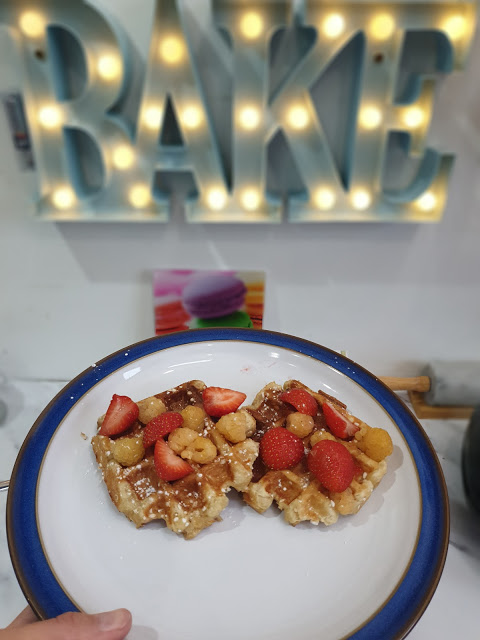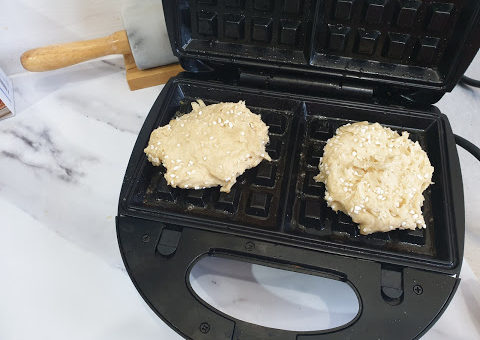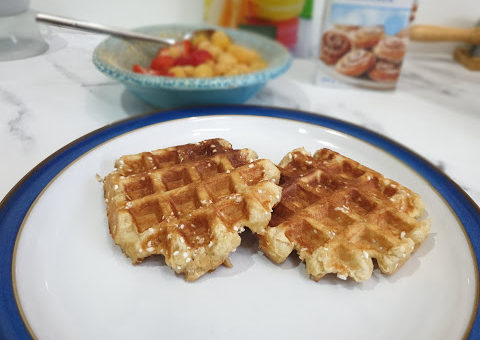We’ve all heard of Belgian waffles, but did you know that within Belgium there are two distinct types? The light, airy Belgian waffles we all know and love are actually known as Brussels waffles, and there is a whole other realm of waffles originating from Liège known as, you guessed it, Liège waffles.
Liège is located in eastern Belgium, in the French-speaking Wallonia region and is home to the lesser-known but highly desirable Liège waffle. The key differences between Brussels waffles and Liège waffles are as follows:
- Raising agent: Brussels waffles are leavened with baking powder, whereas Liège waffles contain yeast (either dried or fresh);
- Shape: Brussels waffles are typically square-shaped, whereas Liège waffles are usually rounded (home bakers feel free to use whatever waffle iron you have!);
- Sugar: Liège waffles contain additional sugar in the form of pearl sugar.
Who knew there would be so many differences between waffles from Belgium?! What makes the Belgian waffle so special, you ask? Well, in contrast to waffles made in the UK or US, Belgian (i.e. Brussels) waffles are known for being lighter, crisper, and more crucially, deeper, due to Belgian waffle irons typically containing a deeper grid.
Normal waffles: “Hi, feel free to spread those toppings on top”.
Belgian waffles: “Here, let me hold that syrup for you in my conveniently deep pockets”.

Translation
Gaufres Liégeoises
I opted for Belgian Liège waffles, to highlight that they were from Belgian but kept the Liège to distinguish them from other Belgian waffles.
Sachets de sucre vanillé –vanilla sugar sachets
Vanilla sugar is a very fine sugar that has been infused with vanilla. It is commonly found in European countries where vanilla extract is not as easily obtainable. Since these aren’t widely available in the UK, I decided that a more accessible option for a UK audience would be sugar plus vanilla extract. Since each sachet weighs 7g, and each sachet is the equivalent of 1-2 tsp vanilla extract, I adapted the ingredients list to call for 15g caster sugar and 2 tsp vanilla extract. Alternatively they are available from Amazon.
Pâte – batter or dough?
Pâte, that old chestnut which can mean a whole manner of things depending on the context (pastry, dough, mixture, batter, paste, pasta, etc.) Ordinarily, I would always refer to a waffle mixture as a batter, but that is because it usually contains only flour, egg, milk and potentially a few other ingredients. However, since this recipe contains yeast, is doughier in texture to handle, and individual discs of it are placed onto the waffle iron instead of a liquid mixture, I decided that ‘dough’ would be more accurate in this particular recipe.

Baking
Aside from the fact that you need some non-standard equipment, i.e. a waffle iron, this recipe is fairly accessible. The only potential hiccup is locating some pearl sugar. My local supermarkets do not stock it, but I managed to source some from Amazon. It may well be found in specialist shops or supermarkets in cities larger than Bath. Another option is the DIY method, either following these instructions or beating sugar cubes until they form smaller clumps.
Overall, this was not a difficult recipe to make, and although the dough was wet to work with, as long as you can manoeuvre it onto a baking try to chill and then onto the waffle iron, it will turn out perfect. I recommend serving these doughy, sugary waffles with some whipped cream and fresh fruit. They’re waffly good!



